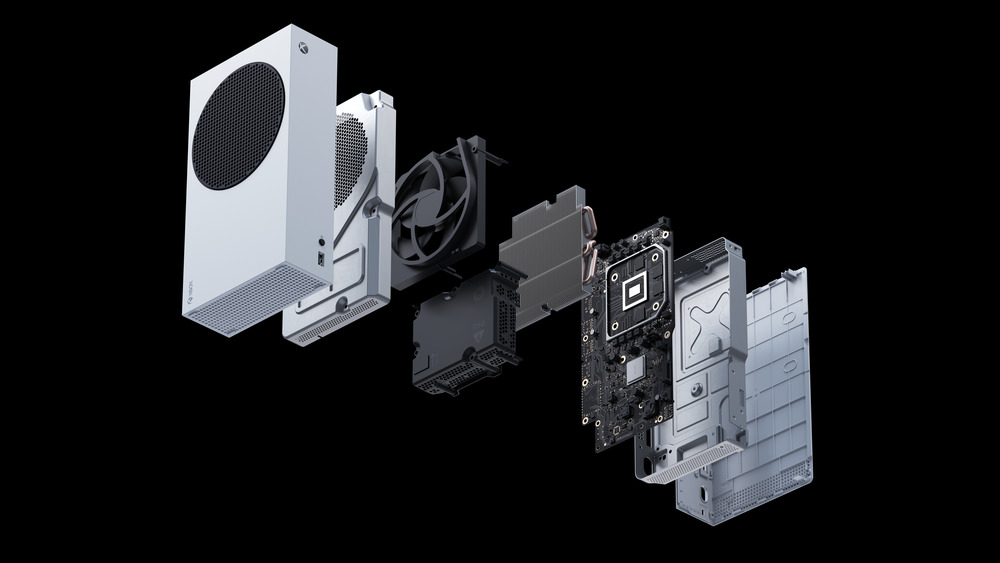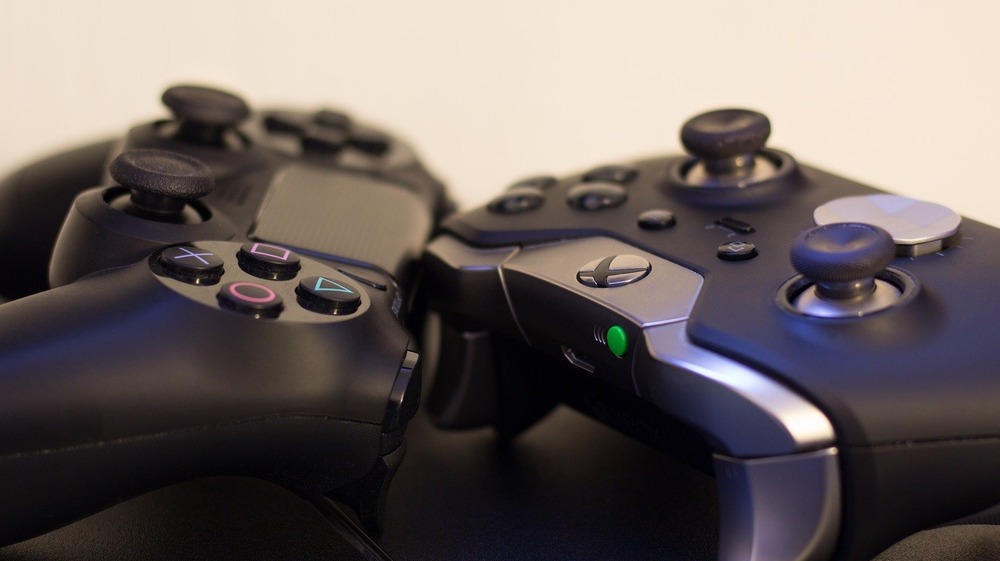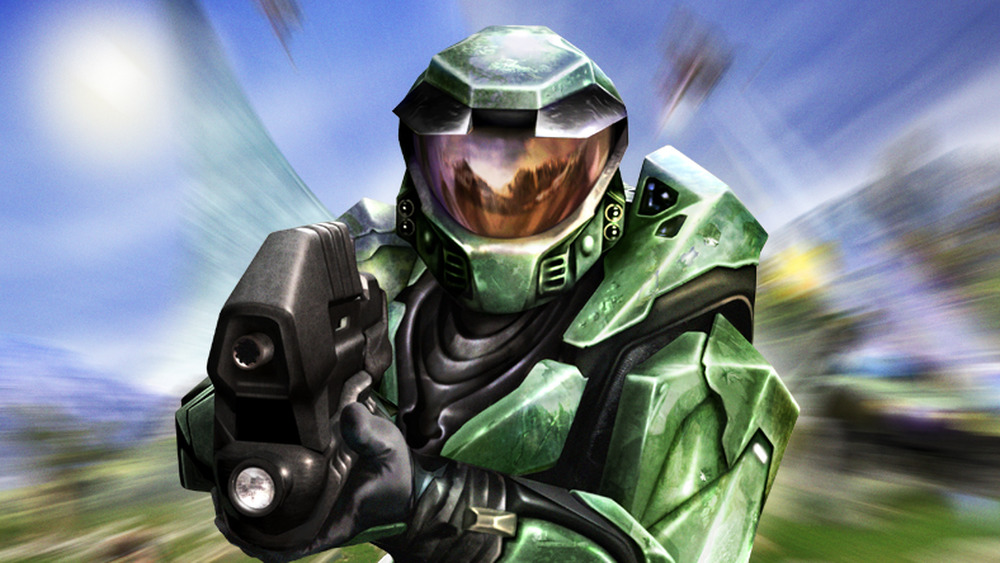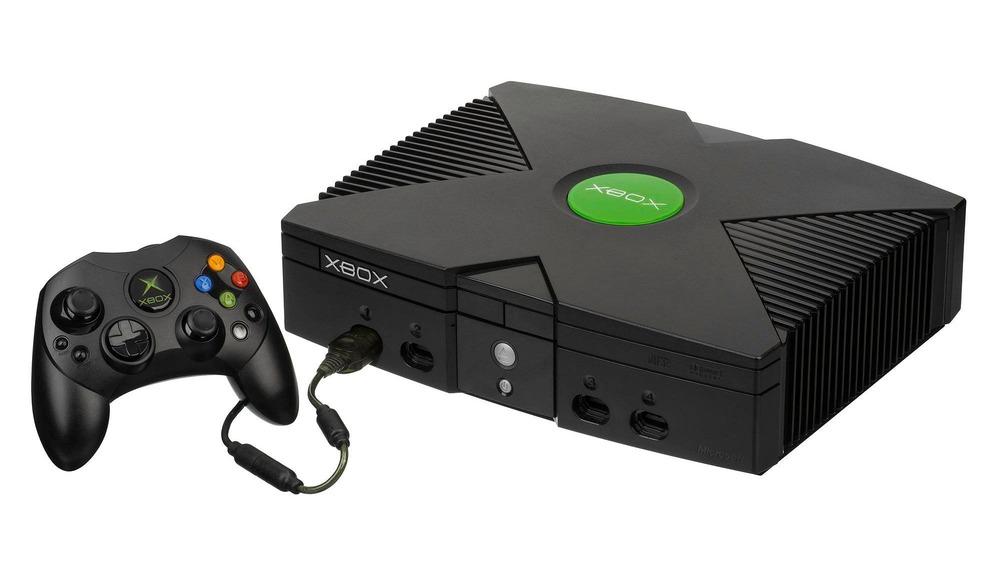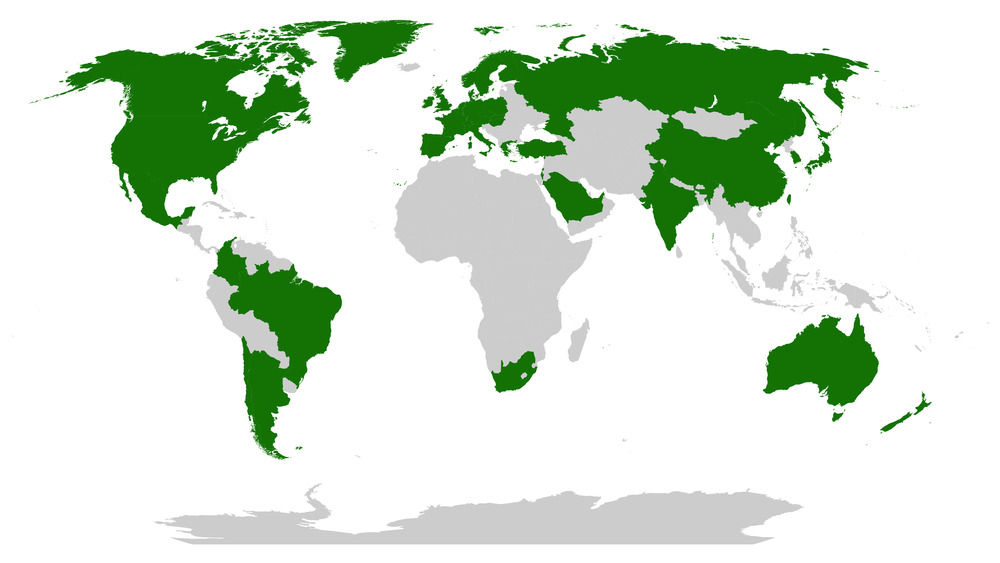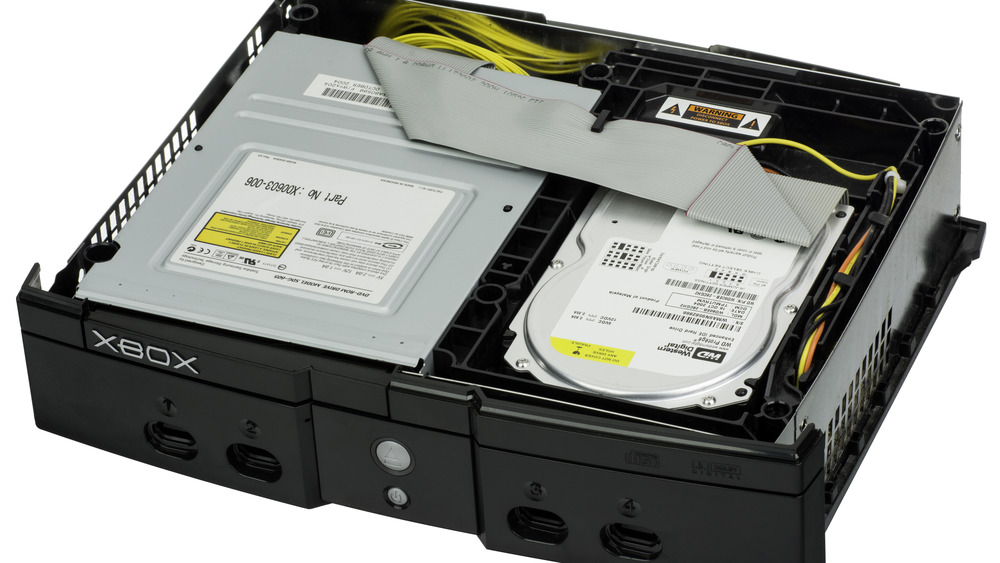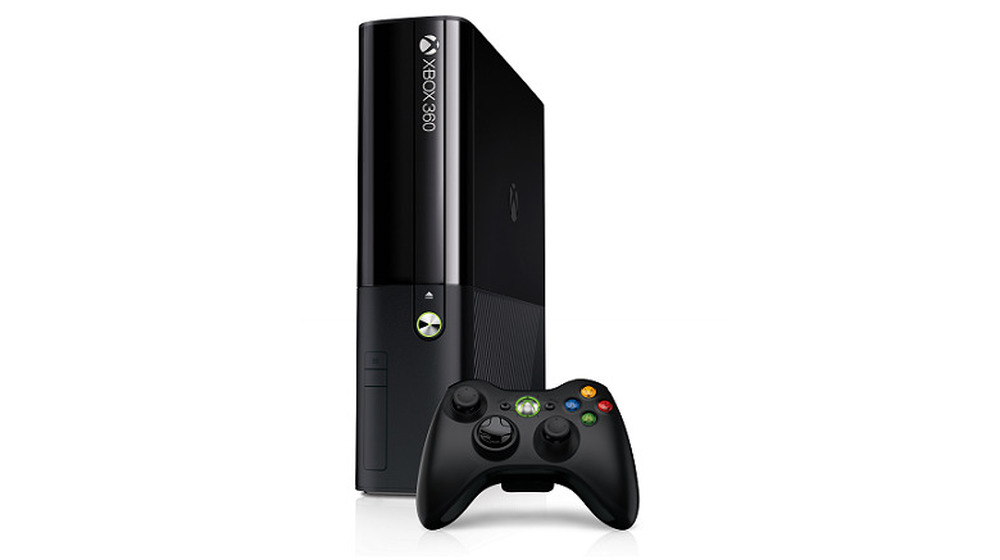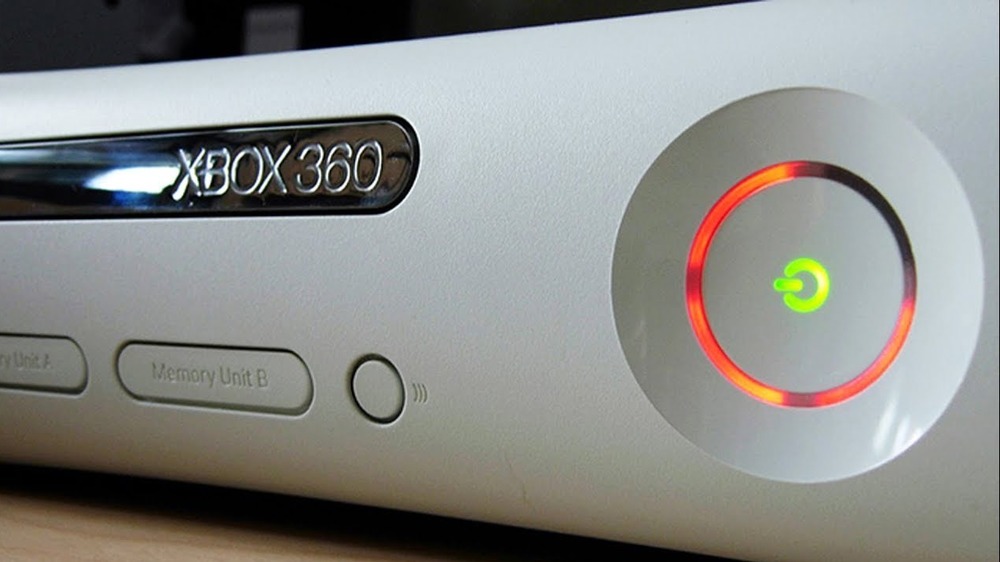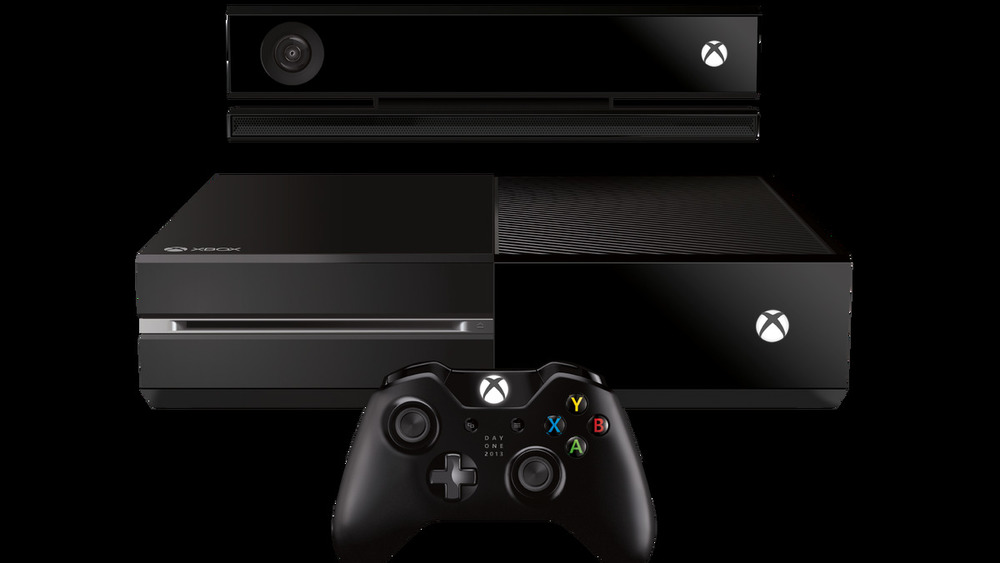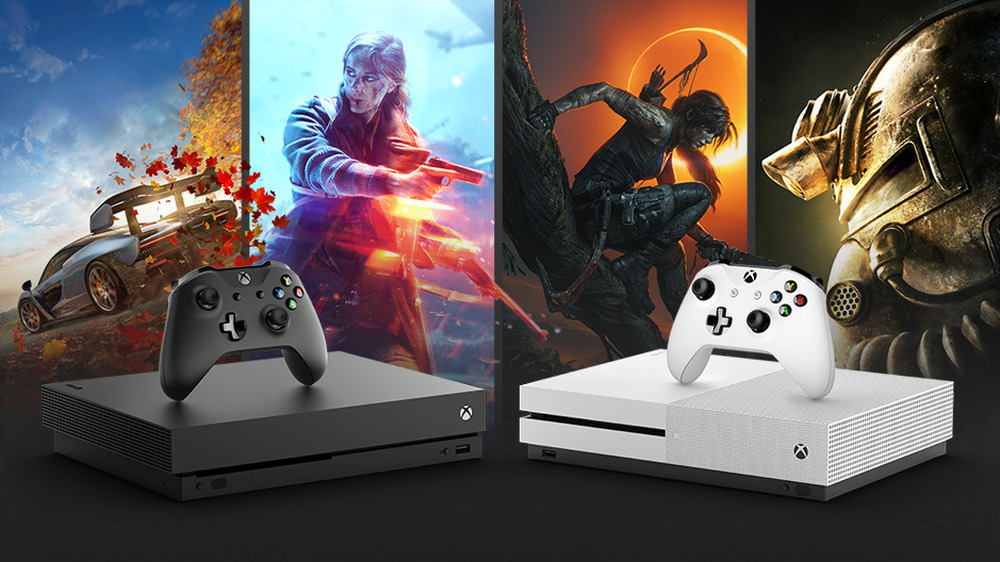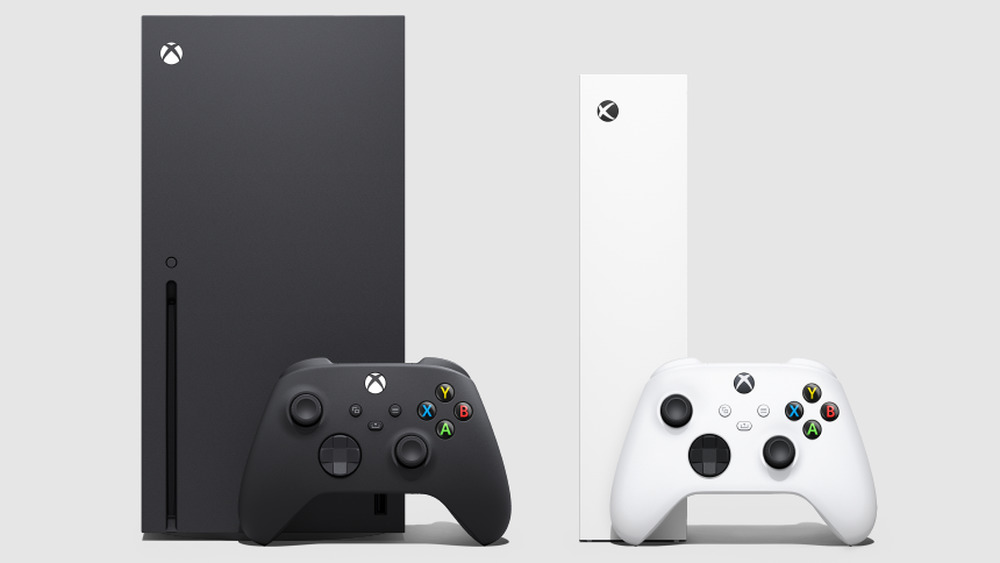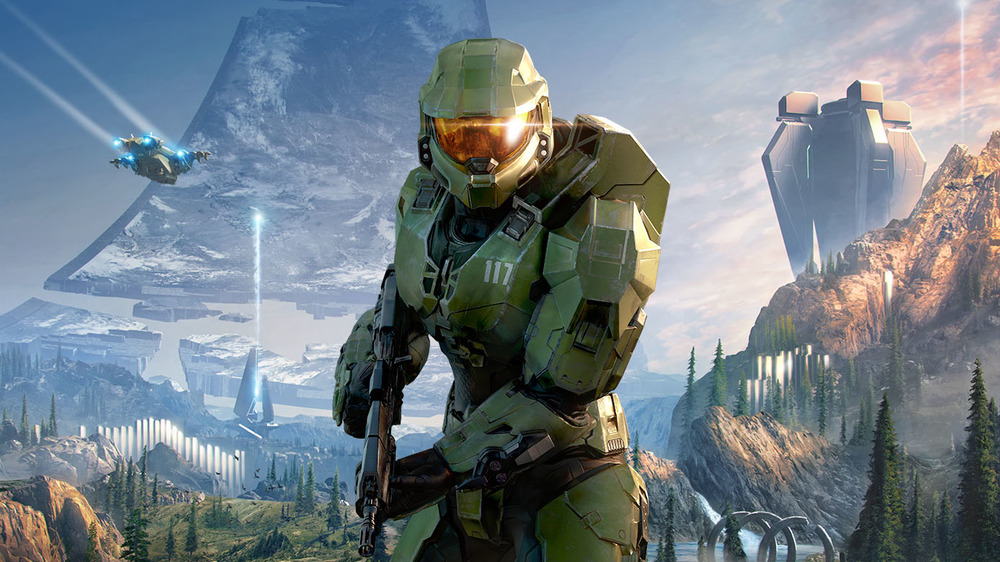The Stunning Transformation Of The Xbox
Microsoft enlisted in the console wars when it launched the original Xbox in 2001. From then on, the Xbox redefined console hardware capabilities with processing power and internet connectivity, and pioneered the standard for first-person shooters on consoles via the Halo series.
While Xbox is a household name today, Microsoft wasn't always certain it would pay off. Throughout the years, the Xbox hurdled obstacles such as the Red Ring of Death and the botched reveal of the Xbox One. The success of the Xbox Series X|S was a result of the lessons Xbox learned as a brand. As Phil Spencer, Head of Xbox, put it: "At Xbox, we listen to what you – players, game developers, and content creators – tell us you want from the future of gaming."
What started as a strange new PC-console hybrid evolved into one of the most prominent console series of the current generation. Here's how the Xbox transformed from a clunky black box into the mini PC tower known today.
The reason Microsoft created the Xbox
Before the Xbox, Microsoft focused on computer technology. Then, the PlayStation 2 was announced, threatening the dominance of PCs in consumer homes. According to VentureBeat, PlayStation creator Ken Kutaragi even called the PS2 a "revolutionary computer entertainment system set to reinvent the nature of video games." In response, Microsoft brainstormed its own gaming console to challenge competitors like Sony.
As detailed in an interview with Bloomberg, Seamus Blackley, the father of the Xbox, figured that PlayStation game developers used PCs to make their games. So, why not essentially make the PC into a console? Blackley and his team pitched the idea of a Windows-based console to Bill Gates, former CEO of Microsoft. Xbox was named after DirectX, one of Microsoft's graphics processing tools used for the console.
It wasn't all smooth sailing though. Xbox co-creator Ed Fries explained to IGN that the Xbox team later realized it would need to drop Windows 2000 and modify the base to run at its best. Gates reportedly wasn't happy about this shift in direction, but later agreed to the change after being reminded of the threat Sony posed to Microsoft's business.
The Xbox opened up new possibilities for developers
Bill Gates first showed off the Xbox's advanced specs, and potential for online play and downloadable content at the GDC in 2000. The Xbox packed a 32-bit 733-MHz processor, NVIDIA graphics card, and 8 GB of storage, which was unheard of in a gaming console. As laid out in the March 2002 issue of Popular Mechanics, the Xbox had PlayStation 2 and GameCube beat In terms of technology.
"Once we saw the full machine, spec-wise, we moved pretty quickly," said Todd Howard, producer and director at Bethesda, in an interview with Bloomberg. "The hard drive and the memory made such a difference in what you could do. It was a major step up from the PlayStation 2."
On Jan. 6, 2001, Gates unveiled the final design of the Xbox at the Consumer Electronics Show alongside popular wrestler and actor Dwayne "The Rock" Johnson. Microsoft reasoned that Johnson and the Xbox had some striking similarities. In Johnson's own words: "The Xbox is everything The Rock is: cutting-edge, powerful, exhilarating, and like The Rock, it will be the most electrifying thing coming out this year."
The Xbox started off with a bang
Microsoft stocked the first thousand Xbox units at the Times Square Toys 'R Us launch event on Nov. 14, 2001. Bill Gates said hello to and played games with new Xbox owners at the event, which Microsoft called "one of the most successful launches in video game history". In just a month and half, Microsoft sold 1.5 million Xbox units.
Halo: Combat Evolved, Xbox's iconic launch exclusive, cemented Halo as a major franchise and a key component in the Xbox's success. Halo sold one million copies in its first few months of release and received praise from multiple publications and websites, including Electronic Gaming Monthly and IGN. The Academy of Interactive Arts and Sciences even crowned it Console Game of the Year in 2002. Halo remained an Xbox exclusive, even after Bungie left Microsoft and became an independent studio.
Best-selling titles like Star Wars: Knights of the Old Republic, which sold out within four days of launch, and Tom Clancy's Splinter Cell, which secured 1.1 million pre-orders, also added to the Xbox's momentum.
Xbox Live connected players
Each Xbox had a built-in broadband adapter, but the service that used it didn't launch until after the console's one-year anniversary. Microsoft's promised online gaming network sprung to life when Xbox Live launched on Nov. 15, 2002.
Xbox owners connected with each other using the Xbox Live Starter Kit. The kit cost $49.95 and came with a year-long Xbox Live subscription, headset, and a minigame. Microsoft announced a lineup of Xbox Live-enabled titles for retail, as well as others coming in 2003, including Halo 2, Counter-Strike, and Star Wars Galaxies: Empire Divided.
Microsoft sold 150,000 Xbox Live Starter Kits in the first week. Because Xbox Live allowed guest players, the number of people using the network was reportedly closer to 200,000. Xbox Live set the pace for online gaming with gamertags, friends lists, matchmaking, and other features new to gaming consoles. For the first time, gamers could easily compete and trash talk with friends and strangers online.
The Xbox reportedly lost Microsoft billions of dollars
In 2002, Microsoft cut the price of the Xbox from $299 to $199 to encourage buyers and compete with the PlayStation 2 and GameCube. As highlighted by VentureBeat, the Xbox cost $425 to produce, so the company was selling consoles for less than half their worth. A report from CBS Marketwatch claimed that the strategy temporarily boosted Microsoft's sales. Ultimately, the Xbox couldn't keep the pace. By mid-2006, Microsoft reported over 24 million Xbox sales and Sony reported over 103 million for the PS2.
Microsoft made the Xbox brand a household name at a hefty cost. According to Microsoft's Home and Entertainment Group (via VentureBeat), the company lost $4 billion in the four years following the console's launch. While the Xbox wasn't the only aspect to blame, insiders estimated that the console's manufacturing caused at least $3.7 billion of the deficit. Not even Halo 2, which reportedly sold more than 2.4 million copies in the first 24 hours after the game's launch, could fill the gap.
The Xbox 360 kicked off the double console launch trend
Just under four years after the Xbox launched, Microsoft revealed the Xbox 360 on May 12, 2005 during a 22-minute MTV special. The Xbox 360 improved on the Xbox's capabilities with upgraded specs such as a three-core PowerPC-based CPU, custom ATI graphics processor, and 512 MB of memory. The Xbox 360 sported a white coating and slimmer body than its predecessor. The controller, a welcomed improvement on the comically large Xbox original controller, was noticeably smaller. Every Xbox 360, including later redesigns, could play DVDs and CDs.
Xbox 360 hit the market on Nov. 22, 2005 in the United States. The Xbox 360 sold for $399 while the Xbox 360 Core, its cheaper counterpart that lacked a hard drive, sold for $299. This double console launch set the trend for releasing lower cost versions of the current Xbox with less advanced specs for consumers on a budget. Microsoft released multiple redesigns of the Xbox 360, including the Xbox 360 Elite and Arcade.
Microsoft later introduced an Xbox-compatible motion and voice-controlled device called the Kinect as an optional add-on. The Kinect allowed Xbox owners to wirelessly communicate with the console and play games that required motion sensors or voice commands such as the Dance Central series.
The Xbox 360's Red Ring of Death proved a costly mistake
Soon after launch, reports trickled in about console failures accompanied by a red LED ring around the power button. The Red Ring of Death that plagued early Xbox 360 models became a legacy that gamers have yet to forget. Despite the name, the RROD wasn't a full ring but three quarters of a circle. The RROD forced Microsoft to issue a $1.15 billion recall — one of the largest in consumer electronics history. The company repaired and replaced countless systems, and extended the warranty to three years.
In his book Xbox Revisited: A Game Plan for Corporate and Civic Renewal (via Business Insider), former Chief Xbox Officer Robbie Bach described the RROD as the product of prioritizing appearance over engineering. Prompted by criticism of the Xbox's original aesthetic, the team designed the look of the console before considering the inside. Bach claimed that, although they ran various tests on the Xbox 360 before launch, they didn't run into the RROD.
Microsoft revealed the Xbox 360 S, or Xbox 360 Slim, for $299 at E3 on June 14, 2010. The Xbox 360 S was the first redesign that removed the RROD — it could still break, mind you, but the power button apparently flashed green instead of red.
The Xbox One left fans disappointed
The Xbox One reveal at E3 2013 stands as one of the most underwhelming gaming presentations of all time. Microsoft designed the Xbox One as an all-in-one entertainment system, bundled with an updated Kinect device — a decision that ultimately ended in disaster. The new console's powerful 8-core AMD custom CPU rivaled the technical capabilities of its competitors, but its reception did not.
Fans didn't appreciate the multimedia approach and felt alienated by the focus on video, music, and features other than gaming. The Xbox One also required users to connect to the internet every 24 hours and restricted used game sales. The $499 price tag, more than any other Xbox before it, didn't help. Negative feedback eventually prompted Xbox to reverse the decision on online check-ins and used game sales. Microsoft also later offered the option of buying the Xbox One without the Kinect for $399.
The Xbox One had two smaller-bodied redesigns: the Xbox One S and the Xbox One X. Both added HDR support and 4K Blu-ray players, but only Xbox One X could game in 4K. Microsoft dubbed Xbox One X the "the world's most powerful console" because of its 4K gaming capabilities.
Xbox redeemed itself through Xbox Game Pass and other offerings
After the Xbox One launch misstep, Microsoft sought to regain the trust of customers with new features and offerings like Xbox Play Anywhere, Xbox Game Pass, and Xbox All Access.
Xbox Play Anywhere titles allowed players with a PC and Xbox One to switch between them without losing save data. Players needed only one digital copy of the approved games for either PC or Xbox One, so the deal was almost like two for the price of one.
Xbox Game Pass offered subscribers unlimited access to older Xbox games and new releases for $9.99 per month. At launch, the Game Pass library held over 100 Xbox One and backwards compatible Xbox 360 games that players could download to their console. Available titles cycled out every month to keep the experience fresh for long-term subscribers.
Xbox All Access, originally meant to be a limited time program, sold Xbox One consoles along with a 24-month subscription to Xbox Game Pass Ultimate and Xbox Live Gold. When it debuted, Microsoft even offered the option to upgrade to Project Scarlett, the company's upcoming next-gen console, after release.
Xbox went all-in on next-gen, cross-gen, and Xbox Game Pass
Microsoft unveiled Project Scarlett as the Xbox Series X during The Game Awards 2019. In the following months, Microsoft introduced the Xbox Series S as the less powerful, cheaper option and released specs to help consumers pick which console to buy. The Xbox Series S cost $299 compared to the $499 Xbox Series X. Both versions ran on an 8-core AMD Zen 2 CPU and AMD RDNA 2 GPU. Mostly notably, the Xbox Series S lacked a hard drive and stored less memory than the Xbox Series X.
The Xbox Series X was the biggest Xbox console in more than one way. The Verge measured the console at 5.9 inches and 11.8 inches tall. Once the PlayStation 5 design was revealed, it only spurred more online discussion about the Xbox Series X as the fridge to the PS5's wifi router. The new controller took inspiration from the Xbox Elite controller and added a Share button similar to the Nintendo Switch and Dualshock controllers.
Along with Xbox Series X|S, Microsoft unveiled Xbox Game Pass Ultimate, adding a cloud gaming service with over 100 titles for console, PC, and mobile. Microsoft also announced that all first-party titles would come to Xbox Game Pass on launch day.
The promising and uncertain future of Xbox
During the 2020 holiday season, the Xbox Series X and S sold out alongside the PlayStation 5. Pre-orders and retail stock alike vanished the instant eager buyers heard news of available consoles.
Microsoft confirmed the Xbox Series X|S launch as the most successful Xbox launch of all its consoles. In an interview with ShackNews, Head of Xbox Phil Spencer predicted that supply would determine the winner of the sales battle against Sony's PS5, which also struggled to get enough stock to major retailers. "Frankly, this holiday, supply is going to dictate how many consoles are sold more than demand," Spencer said.
As of early 2021, Xbox found itself at something of a crossroads. While the next-gen launch proved a success, many would-be buyers had yet to get their hands on a Series X or S. Spencer shared during a GlitchCon livestream that Microsoft was in the process of manufacturing new Xboxes as quickly as possible to ship to stores. Despite these efforts, a large number of Xbox fans were left to either wait for a restock or take their chances with scalpers online.

